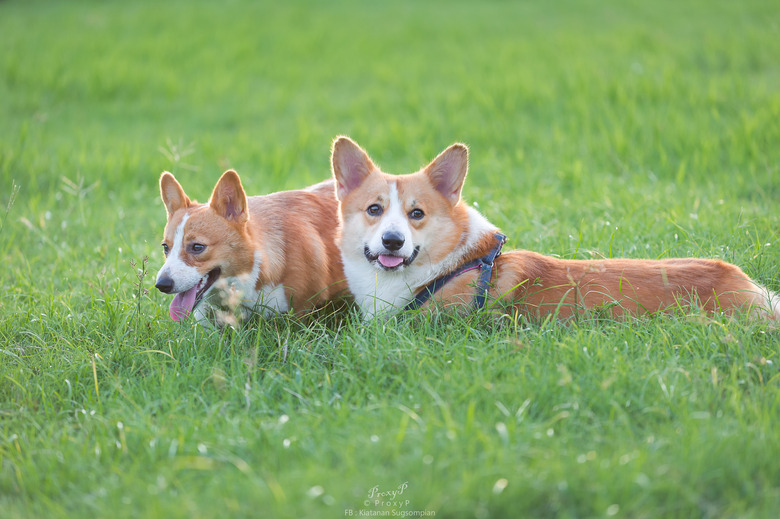How To Help A Male Dog Mate With A Female Dog
Mating in animals seems pretty instinctual. In most cases, when a male dog and a female dog are put together and the timing is right, the lucky dog owners end up with an adorable litter of puppies. You might be surprised that animals like dogs sometimes need intervention from humans to make the process better, especially if it's the first time the dogs have mated.
Dogs mating with assistance
Dogs mating with assistance
The first time a dog mates, believe it or not, he might not know what to do. Dogs that have not mated before are said to be "unproven," according to Dog Ideas. Ensuring the success of dogs mating with assistance can mean seeking the help of an experienced breeder to show you the ropes. If you've ever thought, "My male dog doesn't know how to mate," it could very well be true if the dog has never mated before.
If you're breeding dogs that are American Kennel Club registered, then the litter can also be AKC registered. If the dogs are AKC registered, then you can have more of an understanding of the genetics and pedigree of each parent so you can make choices to ensure you aren't breeding with a dog who has a disease or other unwanted genetic trait.
The first step of successful mating involves putting the male and female dog together at the right time. Female dogs go into heat in a cycle similar to human females. At this time, their body is receptive and ready to become pregnant. A female dog will start to bleed on day one of her cycle. Sometimes, this day is easy to miss if the bloody discharge is light. After the cycle starts, count the days. Then, introduce the dogs on day eight of the female's heat cycle.
Slip mating in dogs
Slip mating in dogs
Breeding Business gives a good explanation of the successful mating process along with a process that is known as slip mating. In successful mates, the female will present her rear end to the male dog, and he will mount her. Then, the dog's organ grows in size, and the two dogs actually become locked or tied together. The purpose of this is to allow the semen to fully enter the female dog to give her the highest chance of a successful impregnation. The two dogs can stay tied together butt to butt for up to 30 minutes. For dog breeders who aren't expecting this, it can be alarming.
Slip mating in dogs occurs when the female either moves away from the male quickly after he enters, or the male moves away before his organ grows in size and they lock together. The female may not yet be ready for mating if this occurs. In this case, Breeding Business says to simply try again the next day. Alternatively, if the male successfully ejaculates into the female before they separate, she can still become pregnant.
Help your dogs mate
Help your dogs mate
Jane Harvey is a champion breeder, groomer, and trainer who has a website called JaneDogs. In her experience, dogs mating with assistance is most often not needed, but she offers help for when it is needed. When introducing your dogs for the first time, she says to put the female dog on a leash and collar just in case she becomes aggressive with the male dog. When the male dog seems ready to mount, steadying the female dog with a hand on her collar and a hand around her ribs can help. If this is the female's first mating, she may take longer to become receptive to the male dog, so Harvey says to be patient.
After the dogs release from their lock or tie, Harvey says that sometimes the male's penis may not fully retract into its sheath. In this case, you can assist by gently moving the penis back into its sheath. This can help avoid permanent problems with the male's penis later.
According to Revival Animal Health, male dog breeding problems can be caused by low sperm count. This can be caused by a fever or testicular trauma. A disease called brucellosis can cause infertility. Prostate issues in older dogs can also cause infertility. Some of these potential problems can be avoided by knowing the age, genetics, and medical history of the dogs you're choosing to breed.
Always check with your veterinarian before changing your pet's diet, medication, or physical activity routines. This information is not a substitute for a vet's opinion.
